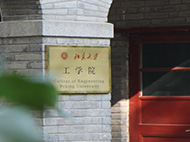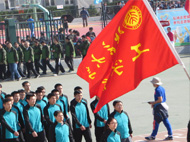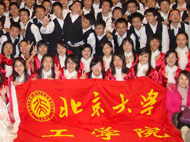报告人:Prof Qiang Xu AIST-Kyoto University Chemical Energy Materials Open Innovation Laboratory (ChEM-OIL), National Institute of Advanced Industrial Science and Technology (AIST), Sakyo-ku, Kyoto 606-8501, Japan.
时间:11月01日(星期五)14:30-16:30
地点:澳门太阳娱乐网站官网综合科研楼137会议室
主持人:邹如强 教授
Abstract:
Recently, we have successfully synthesized a number of porous MOFs and developed their new applications as catalysts, as supports for metal nanoparticles and as templates/precursors for synthesis of nanostructured materials.1, 2 Porous carbons and carbon composite materials have been synthesized by using MOFs as templates/precursors and the resultant materials display high specific surface areas and excellent electrochemical properties as electrode materials for electric double-layered capacitor (EDLC) and as electrocatalysts for various reactions. Super-long single-crystal cobalt-organic framework (Co-MOF) nanotubes have been synthesized and carbonized to produce hierarchical dendrites with carbon nanofiber trunks and carbon nanotube branches, which exhibit excellent electrocatalytic activity for oxygen reduction reaction (ORR), and exceptional applications in rechargeable Zn–air batteries. A single-crystal capsular-MOF with openings on the wall has been synthesized, which can easily load the largest amounts of sulfur and iodine among known MOFs. Derived from capsular-MOF and melamine through pyrolysis−phosphidation, we fabricated a nitrogen-doped capsular carbon-based framework with iron−nickel phosphide nanoparticles immobilized on capsular carbons interconnected by plentiful carbon nanotubes, which exhibits efficient multifunctional electrocatalysis for oxygen evolution (OER), hydrogen evolution (HER), and oxygen reduction (ORR), achieving well-qualified assemblies of an overall water splitting and a rechargeable Zn−air battery. “Quasi-MOFs” have been prepared by controlled deligandation of MOFs, which have a transition-state structure between porous MOFs and metal oxides and exhibit dramatically enhanced catalytic performance. This talk will discuss the catalytic and energy applications of MOF-derived nanomaterials.
Biography:
Qiang Xu received his PhD in 1994 from Osaka University. He is director of AIST-Kyoto University Chemical Energy Materials Open Innovation Laboratory (ChEM-OIL), adjunct professor at Kobe University/Kyoto University, specially-appointed professor at Yangzhou University, and distinguished honorary professor at The Hong Kong Polytechnic University. He received the Thomson Reuters Research Front Award in 2012 and was recognized as a highly cited researcher (2014-2018) in Chemistry and Engineering/Materials Science (two fields each year) by Thomson Reuters/Clarivate Analytics. His research interests include the chemistry of nanostructured materials (including MOFs) and their applications, especially for catalysis and energy. He has published more than 350 papers with citations > 30000 and an h-index > 88 (Web of Science). He is on a number of editorial/advisory boards of journals, including EnergyChem (Elsevier, Editor-in-Chief), Coordination Chemistry Reviews (Elsevier; Associate Editor), Chem (Cell Press), Matter (Cell Press), Chemistry-an Asian Journal (Wiley), Advanced Sustainable Systems (Wiley) and ChemNanoMat (Wiley). He is a member of the Engineering Academy of Japan (EAJ), European Academy of Sciences (EurASc) and National Academy of Sciences, India (NASI).
欢迎广大老师和同学们参加!








